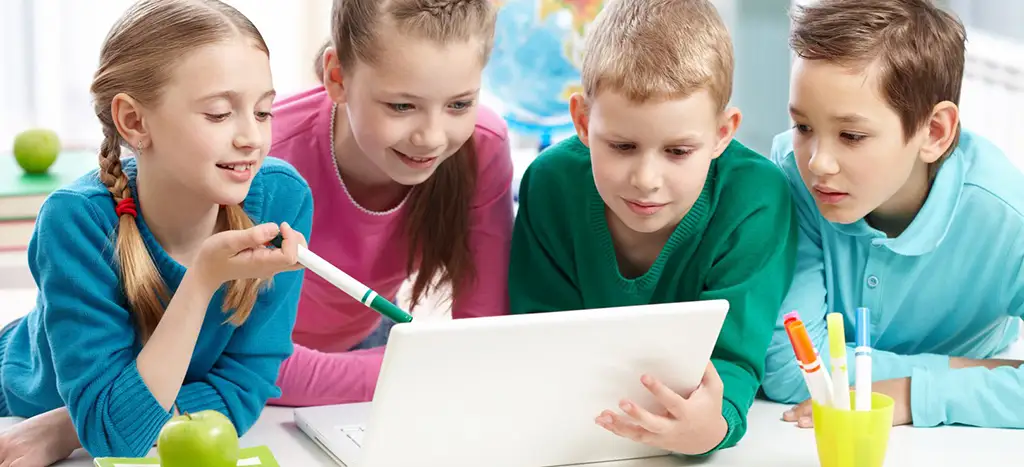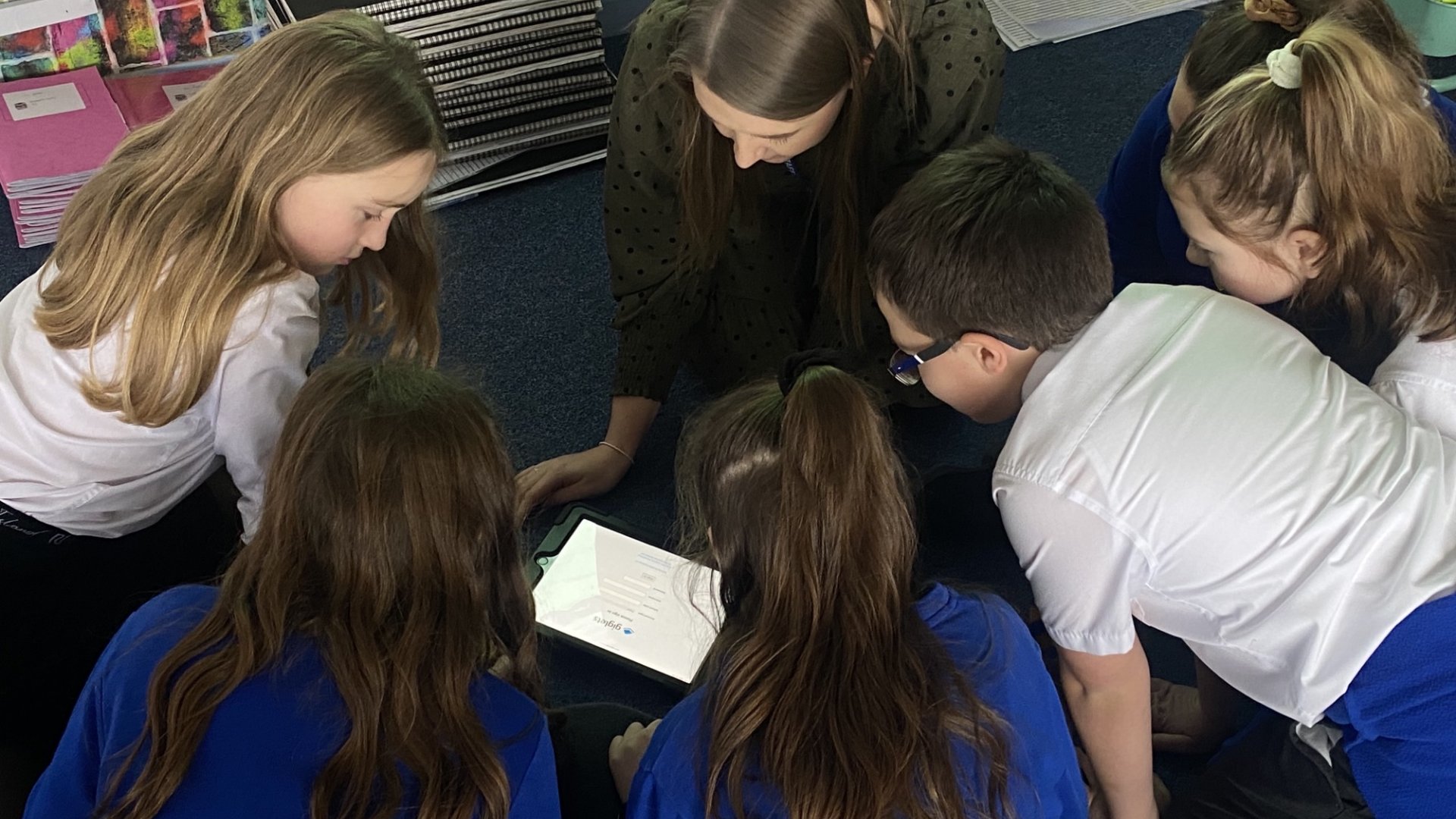
Using Reading with Giglets as a Writing Stimulus
September 20, 2022 | 3years | Case Studies
Key School Information
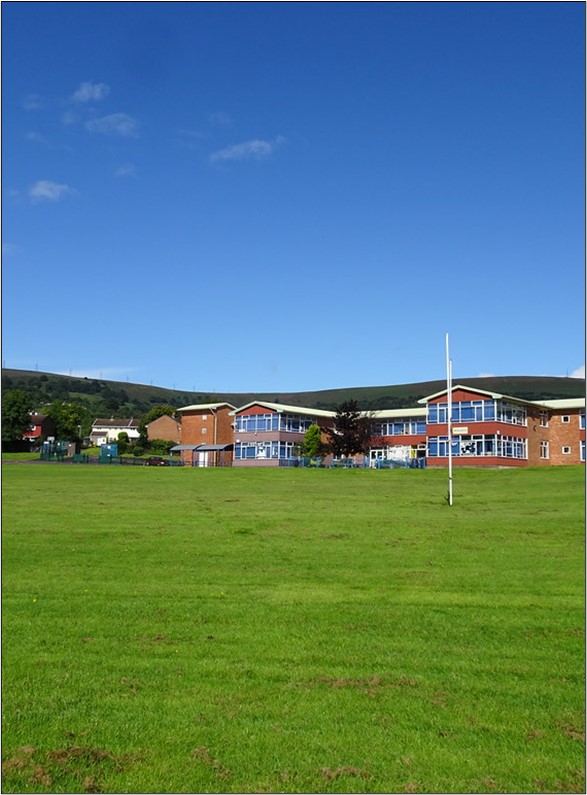
Pontnewydd Primary and Nursery School, was founded in 1955 in Cwmbran, South Wales.
The school has 412 pupils and 34.9% of pupils are entitled to free school meals (FSM).
The school hosts a specialist teaching facility for a small number of students with moderate learning difficulties.
The school’s vision is reflected in its motto Nurture, Inspire, Achieve.
Staff at Pontnewydd were thrilled to have an engaging, digital resource to support reading sessions. It ignited a newfound enthusiasm and love of reading. Introducing Giglets to our learners saw them become instantly engaged. The illustrations and theme music captivated our learners and left them wanting more. Initially Giglets was used to support reading across the school, but after twelve months, we began to use Giglets as a stimulus for writing as well as reading.
An Engaging Resource to Support Reading

Pontnewydd Primary School subscribed to Giglets in 2018 and it quickly became embedded not only as resource to help teachers teach reading and comprehension but as a tool to promote a positive reading culture.
I think that the variety and diversity of books on Giglets is fantastic!
Using Giglets in Class
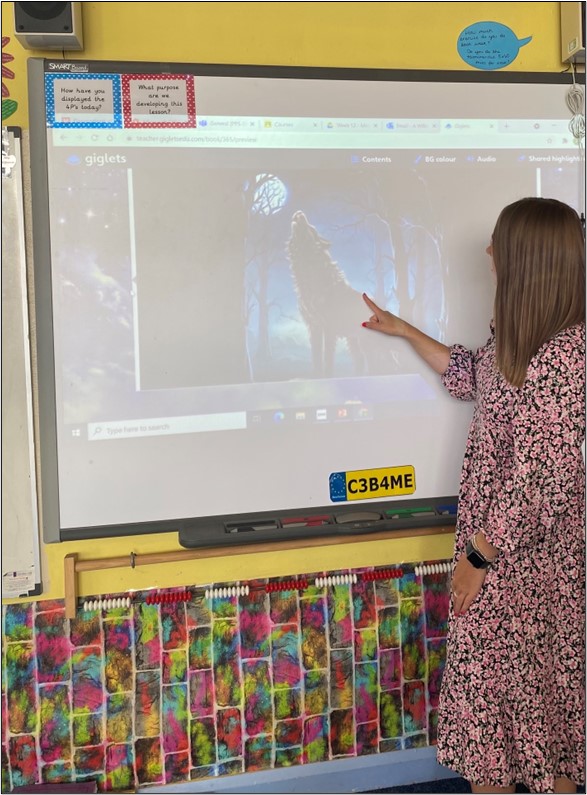
Teachers at Pontnewydd share Giglets books on the interactive whiteboard, to support modelled and shared reading and whole class engagement.
Staff use the detailed, beautiful illustrations to initiate high-level discussions and develop children’s higher order thinking skills.
Highlighting rich vocabulary in the Giglets books, meant that the teachers could use Giglets to develop children’s vocabulary. Giglets also provided a great opportunity to use the books as excellent models of sentence structure. This became a key part in the whole class reading sessions.
Reading into Writing
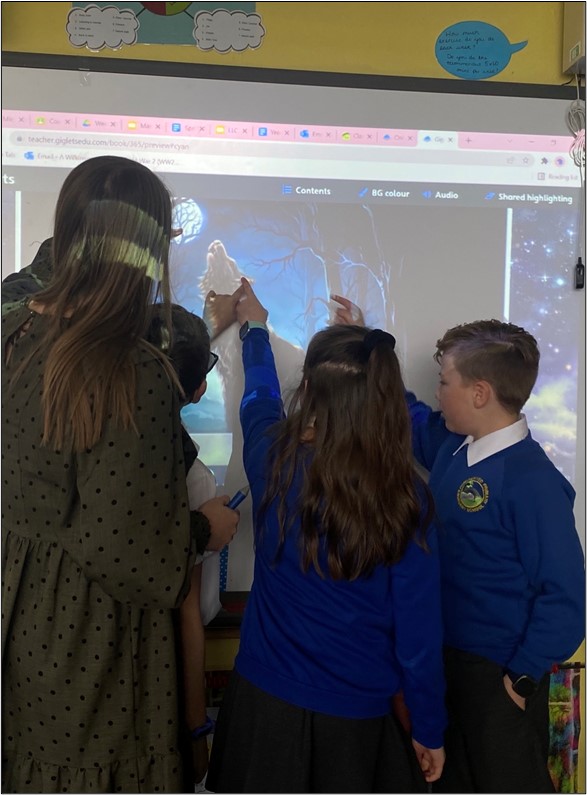
Initially Giglets was used to support reading across the school, but after twelve months, Pontnewydd began to use Giglets as a stimulus for writing as well as reading.
Giglets books exposed the children to a range of quality vocabulary and a good range of sentence structure, which enabled us to explore and create our own sentences.
Staff use the detailed, beautiful illustrations to initiate high-level discussions and develop children’s higher order thinking skills.
Teachers at Pontnewydd not only used Giglets for sentence and paragraph level work but built whole writing units around texts. The following worked example shows how the Giglets text The Curse was used to develop narrative writing in Year 6 classes.
The Hook
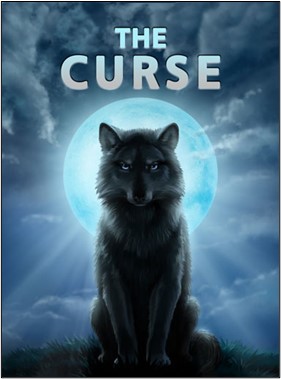
In Year 6 we read ‘The Curse’ as a starting point for our Narrative Writing Unit. Children were instantly engaged on the first day. We had copies of the front cover and illustrations around the room with the book title covered from sight. We played the theme music and turned out the lights to create a supernatural atmosphere. This brought on fantastic discussions about what the children thought the book was going to be about. The boys in particular were very enthusiastic about this task as the images were mysterious and slightly unnerving!
Their predictions were fantastic and detailed! Using the illustrations in Giglets is an ideal opportunity to promote creativity and predictions skills. Listening and speaking skills can be developed as children share and listen to their peers responses to the illustrations. Everyone’s opinions are valued as there are no wrong answers.
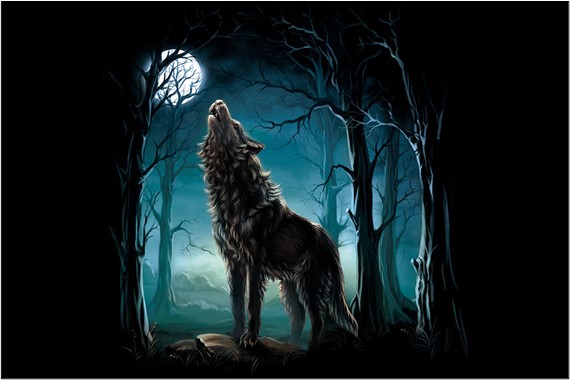
Developing a Deeper Understanding
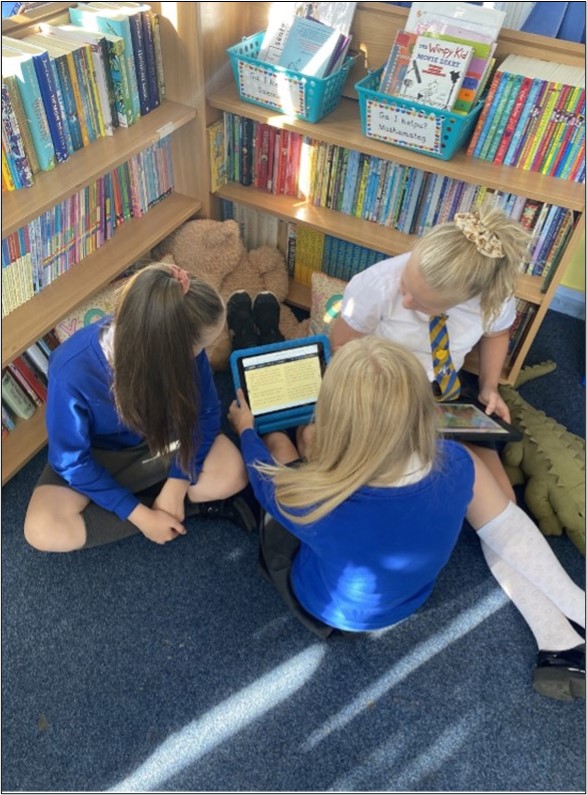
In order to develop a deeper understanding of the text, its characters and the genre, Year 6 pupils used the resources provided on Giglets.
After reading, the learners had developed a full understanding of what a curse was, something that prior to reading they were not that familiar with. It was important for the teacher and children to have a shared and common understanding of the word ‘curse’ to inform the next stage: the narrative writing. The class teacher used the Giglets Higher Order Thinking Skills Questions, to discuss the story and challenge the children's thinking.
Vocabulary Building

When the children had a good understanding of the story and its features, teachers identified the key writing skills that would be needed for their final piece. An important part of those next steps was building a vocabulary bank children could draw from in their writing.
We used the highlighter tool to pick out specific vocabulary that we wanted to ‘magpie’ in our own version of the curse. As a school, developing children’s oracy skills and extending their vocabulary is important to us and Giglets is an effective way of supporting that.
The school used the Frayer Model to explore meaning of words and to find synonyms to extend their vocabulary.
Narrative Writing in Year 6

Following vocabulary work, the children planned their own narrative based on a curse. They used the structure of ‘The Curse’ to help them. Having this structure helped the children to plan their own writing.
They were also able to refer back to writing techniques used in the book such as ‘show not tell’ for ideas and inspiration.
Another successful technique used in the book was the use of a ‘jingle’. The children loved this idea and decided that they were going to reveal their own curse in their writing through a ‘jingle’. too!
Impact
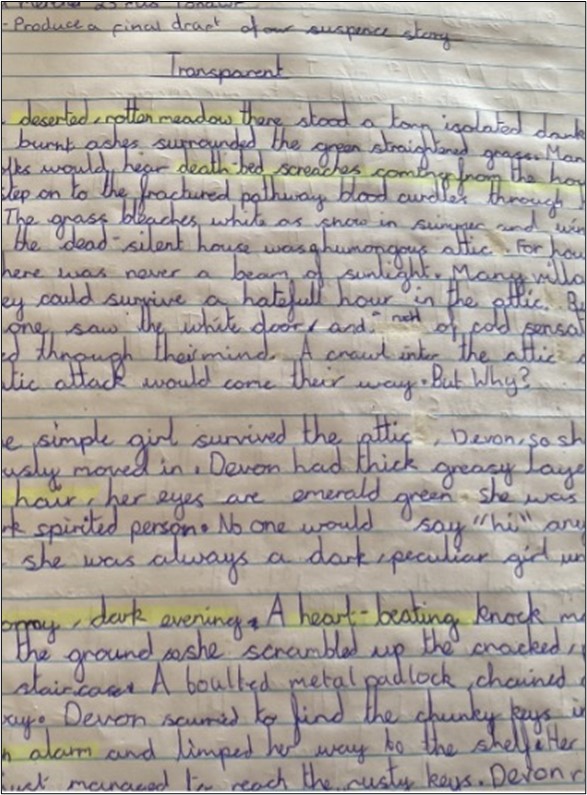
Overall, using The Curse as a starting point for the learners’ writing worked really well. It gave those who usually struggle with innovative ideas a platform where they could change as little or as much as they wanted. Children working below age-related expectations changed minor details in their own version such as characters and the curse itself; others, who were more confident writers, were able to produce an entirely new narrative.
I believe that had we not shared this Giglets book with the children then the outcome would not have been so successful. It was a great two weeks with high levels of engagement and participation from all members of the class. Many children produced writing which was above their usual level.
Pupils at Pontnewydd

Children in Year 6 thoroughly enjoyed their experience of reading and writing from The Curse.
The Curse was so cool, I loved the pictures as they really got me thinking about the moon.
We loved reading The Curse, I didn’t want the story to end. But sometimes I got a little bit scared!
